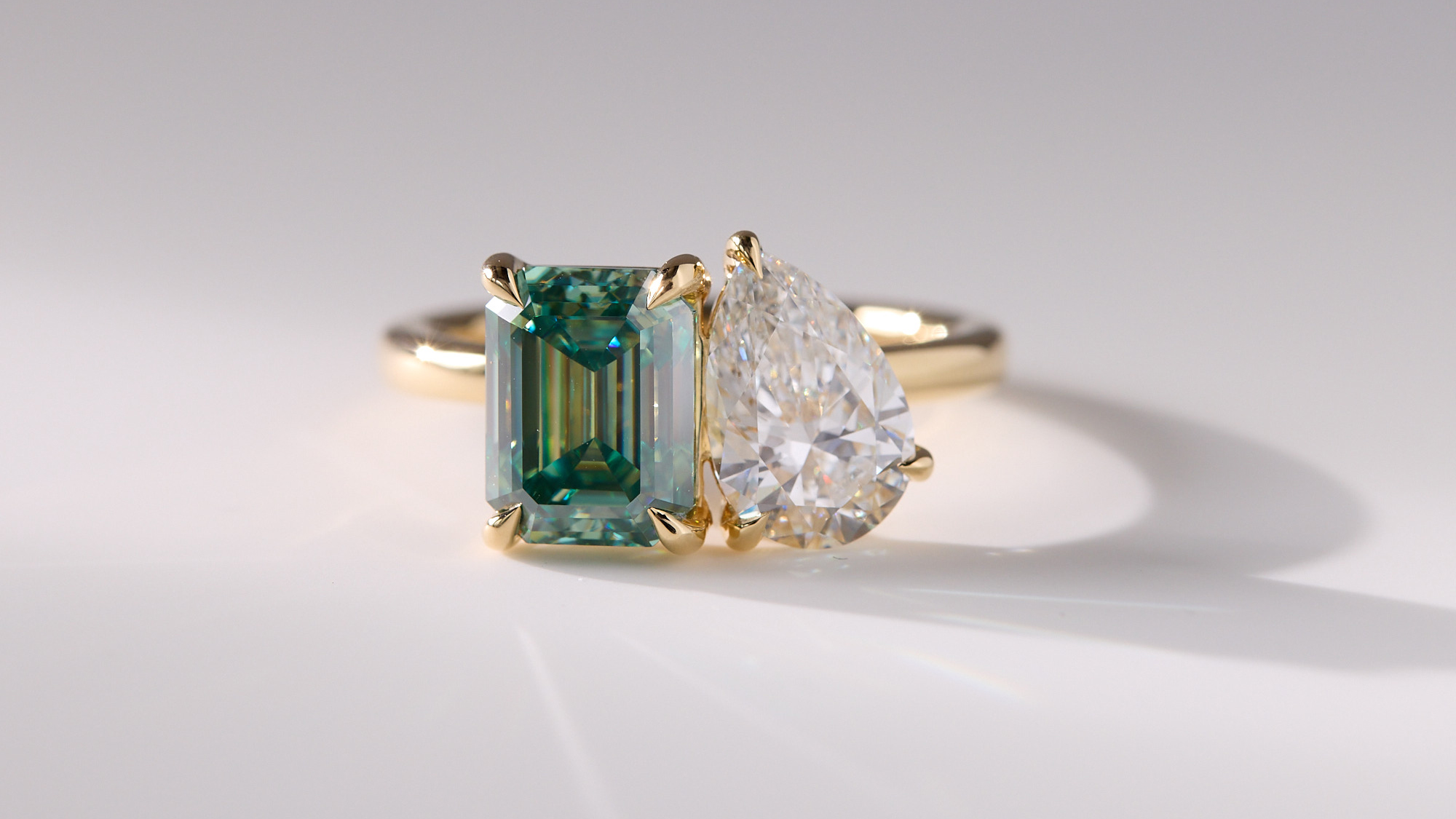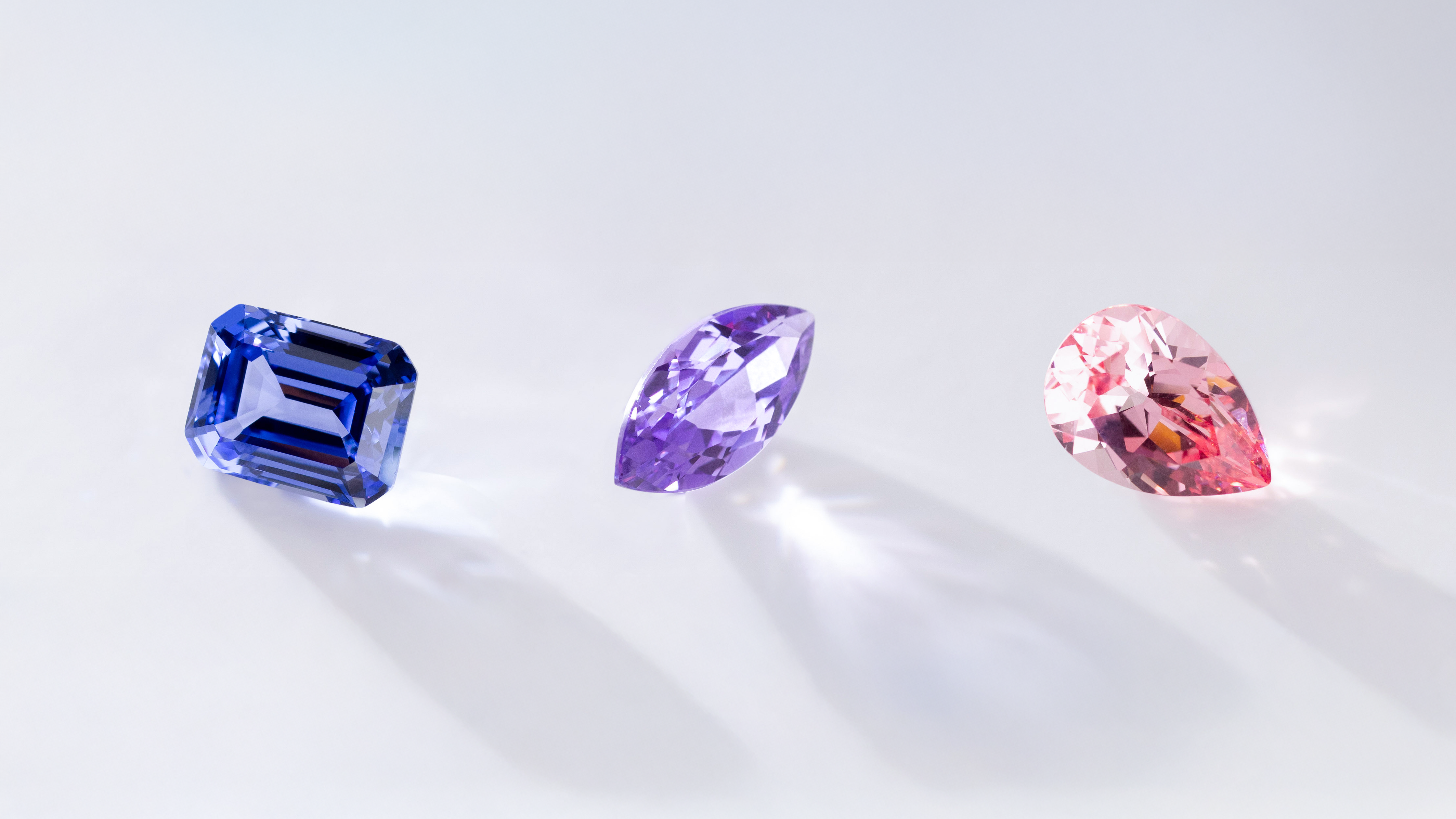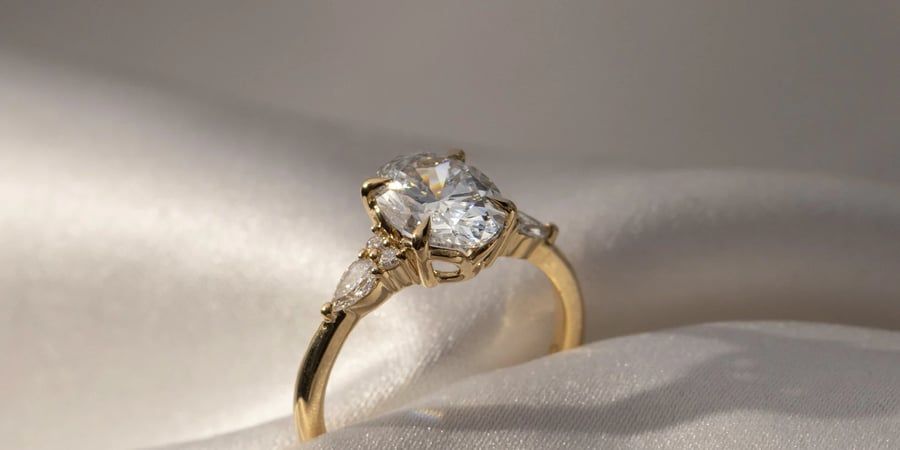
Choosing an engagement ring centre stone is a significant decision. Not only will it become a symbol of your love and commitment, but it’s also potentially a considerable financial investment. While diamonds have long been the traditional choice for engagement rings, some couples can decide to take the non-diamond route. So, if diamonds aren’t your thing, we’ve got you covered.
It should be noted here that mined diamonds are not an environmentally-friendly choice. Mined diamonds often come from conflict zones and can be associated with violence and human rights abuses. Mining in general causes water pollution, biodiversity loss, and habitat destruction — something that unfortunately concerns all mined gemstones.
Nevertheless, what are the popular diamond alternatives? Before we start, this list will not contain lab grown diamonds. This is because lab created diamonds are real diamonds with the same durability and sparkle. A lab created diamond is physically and chemically identical to a mined diamond, but has a much lower socio-environmental impact and price.
Accordingly, find seven popular diamond alternatives for engagement rings below:
1. Moissanite
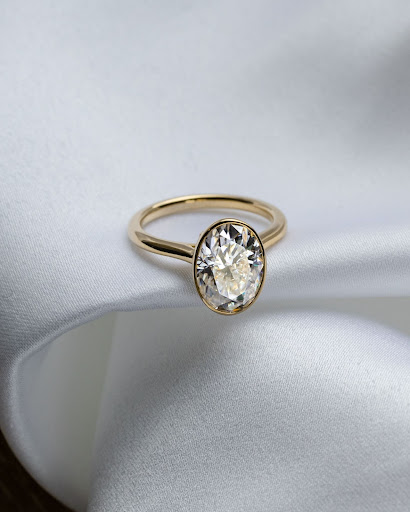
About Moissanite
Moissanite is a beautiful stone that is becoming increasingly popular as a diamond alternative. Made up of silicon carbide, it is more affordable than a diamond and has many of the same optical properties, though it sparkles even brighter as it has a higher refractive index. Dissimilar from many diamond alternatives, they are also both essentially colourless. This means it can complement any ring setting well, including platinum, yellow gold, rose gold, and white gold.
Moissanite is often used to replace diamonds in high-pressure experiments because it is difficult to tell the difference between the hardness of the two stones. Its durability is demonstrated by its score of 9.5 on the Mohs scale.
Advantages of Moissanite
Moissanite is a good diamond alternative for several reasons. Firstly, moissanite is cheaper than a diamond centre stone or diamond accents, so couples on a budget can still get the look of a luxurious diamond ring without breaking the bank. Secondly, a moissanite stone is sparkly like a diamond so couples can still get the dazzling effect they want without overspending. Finally, moissanite is responsibly sourced, so couples can choose a diamond alternative that meets their standards for social responsibility.
Disadvantages of Moissanite
While moissanite is often touted as a cheaper alternative to diamonds, there are two main disadvantages. Firstly, as it is a diamond simulant, moissanite is less durable than diamond and is more likely to scratch or chip. However, it should be noted here that it's substantially more durable than other popular diamond simulants, such as cubic zirconia (CZ). The latter is the cubic crystalline form of zirconium dioxide and is only 8-8.5 on the Mohs scale.
Moreover, although moissanite is known for its shimmering white hue, it actually has a subtle yellowish tint, which leads to a rainbow sparkle. In contrast, diamonds generally have a pure white colour caused by how they refract light, which is assessed on a scale between D-Z with D being completely colourless.
2. Emerald
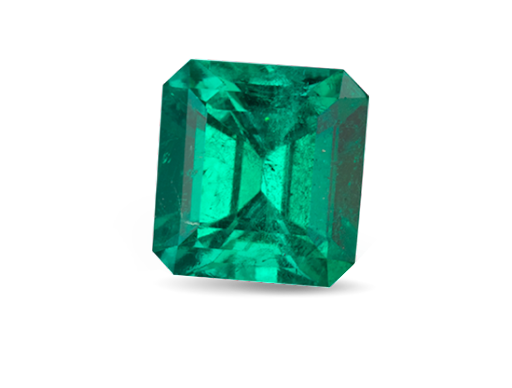
About Emeralds
Emeralds are precious gemstones and a diamond alternative that is said to represent hope, new beginnings, and growth. What better way to symbolise your relationship than with coloured gemstones that represent all of those things? Additionally, an emerald is 7.5 to 8 on the Mohs scale and has fair to good toughness.
Emeralds are a variety of the mineral beryl that gets its distinctive green colour from traces of chromium and vanadium. These precious stones are found in several countries worldwide, including Brazil, Colombia, Zambia, and Zimbabwe. However, emeralds from Colombia are generally considered to be the finest quality.
Advantages of Emeralds
Emeralds are a good diamond alternative because they have a unique look and are eye-catching. They are also a good choice for those who want a green gemstone, as emeralds range from light to dark green and can make your engagement ring stand out.
Emeralds are durable enough for everyday wear, but care should be taken to avoid scratching the stone's surface. In addition, emeralds may require special care when cleaning as harsh chemicals can damage the stone.
Disadvantages of Emeralds
One of the most important disadvantages is that emeralds are much more likely to chip, crack, and scratch than diamonds as they are softer. They are also often more expensive than diamonds due to their rarity.
In addition, emeralds typically have more inclusions, or imperfections, than diamonds. As a result, they generally have less brilliance and fire.
3. Sapphire
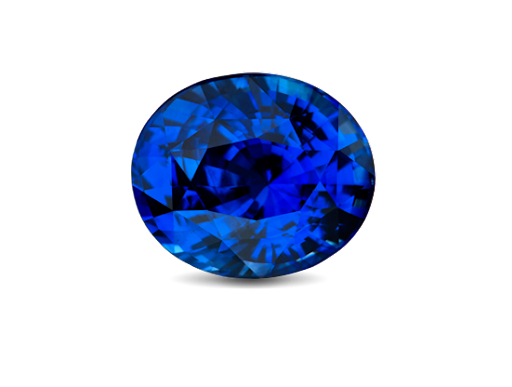
About Sapphires
A sapphire is a stunning blue natural gemstone that has been popular for centuries. In fact, blue sapphires have been found in jewellery dating all the way back to 800 BC! Sapphires are said to represent wisdom, loyalty, and faithfulness, which makes them the perfect choice for diamond alternatives.
Alternatively, as far as stunning diamond alternatives go, a trendy option is white sapphires. White sapphire is a completely colourless sapphire and may be more versatile than other diamond alternatives. For both the blue and white stone variations, sapphires are 9 on the Mohs scale — the third hardest mineral, after diamond and moissanite.
Sapphires are a type of corundum, a mineral that is composed of aluminium oxide. Trace elements, such as iron, titanium, and chromium, can give sapphires their distinctive blue colour.
As an excellent diamond alternative, Sapphires are found in a wide range of locations worldwide, including Sri Lanka, Madagascar, Kashmir, and Australia.
Advantages of Sapphires
Sapphire is a popular choice for an engagement ring for several reasons. First, sapphires are less expensive than diamonds, making them an affordable diamond alternative for couples on a budget. Second, sapphires are available in a wide range of colors, allowing couples to choose a unique and personal ring. Third, sapphires are durable and scratch-resistant (50% more than glass and 10 times that of stainless steel), making them a good choice for active couples who want a ring that will last.
Disadvantages of Sapphires
Sapphires have some drawbacks compared to diamonds. For one thing, sapphires are not as hard as diamonds, so they are more likely to be scratched or chipped.
In addition, sapphires are not as brilliant as diamonds, so they will not sparkle as much. Diamonds refract light in a distinctive pattern known as "fire" and are more like mirrors, while sapphires have a lower rating on the refractive index.
4. Ruby
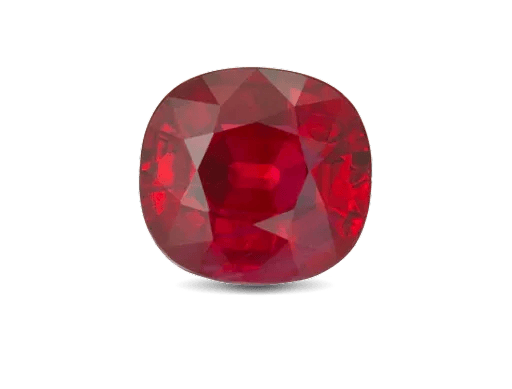
About Rubies
Rubies come in a vibrant red colour and are said to represent love and passion. Rubies rank 9 on the Mohs scale, which means they won’t be damaged easily. Rubies are a variety of the mineral corundum, prized for their intense red colour. Rubies are found in many locations, including Myanmar, Afghanistan, Sri Lanka, and Thailand.
In terms of quality, the most critical factor is the intensity of the red colour. The second most important factor is the clarity of the stone. Indeed, rubies completely free of flaws are extremely rare and command high prices.
Advantages of Rubies
While diamonds have long been the traditional choice for engagement rings, rubies are sometimes regarded as the best diamond alternative. Unlike diamonds, which are graded based on clarity, colour, cut, and carat weight, rubies are judged mainly by their colour according to three criteria: hue, tone, and saturation.
In addition to their beauty, rubies are also very durable, making them excellent diamond alternatives. With proper care, a ruby engagement ring will last a lifetime and is a nice choice for couples looking for something unique and special.
Disadvantages of Rubies
Rubies are less durable than diamonds and are more likely to scratch or chip. They also require more care, as they are susceptible to heat damage and require special cleaners and storage solutions.
In addition, rubies tend to be less abundant than diamonds, making them more expensive. As a result, couples who are looking for a more reasonable option may want to consider a lab grown diamond engagement ring instead.
5. Opal
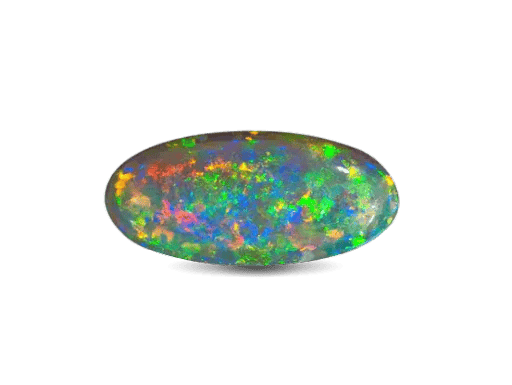
About Opals
Opals are a type of alternative stone prized for their beautiful colours, patterns, and fancy shapes. An opal is typically found in shades of white, though it can also be found in shades of blue, pink, and green.
Opals typically form in deposits of silica-rich rock, such as sandstone or limestone. As the rock erodes, the silica is carried away by water and transported to another location, where it settles and forms a new deposit. Over time, this process can repeat itself many times, slowly creating layers of opal. Eventually, these layers harden and become the opals that we know today.
Unlike other gemstones, opals represent hope, creativity, and inspiration, which makes them ideal for couples who want their relationship to be full of those things.
Advantages of Opals
Opals are enchanting and striking gemstones. Unlike diamonds, which are formed deep within the earth's crust, opals are formed from rainwater that seeps into crevices in the rock. As a result, every opal is unique, with its distinctive pattern of colours and flash.
In addition, opals typically come at a more affordable price than diamonds, making them a better option for couples on a budget. And because they are not as well-known, opals can help to add a touch of originality as a diamond alternative.
Disadvantages of Opals
While opal stones are often praised for their unique beauty, they are not typically considered ideal for engagement rings. One of the biggest drawbacks of opals is that they are relatively soft, ranking only 5.5-6.5 on the Mohs hardness scale. Additionally, opals can sometimes crack or lose their colour if exposed to too much heat or sudden temperature changes.
6. Turquoise
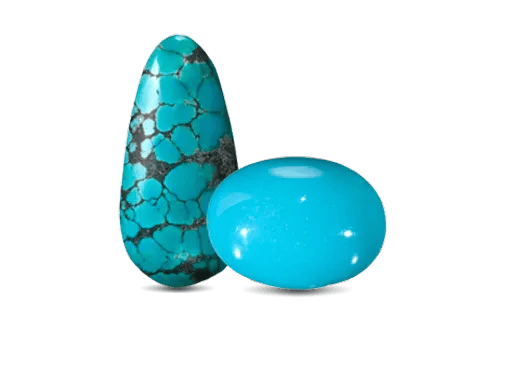
About Turquoise
Turquoise is a beautiful blue-green stone found in several different geological settings. It is most commonly associated with copper deposits, and as a result is often found in areas with active or recent volcanic activity.
The colour of turquoise varies depending on the exact composition of the mineral, but it is typically a bright, vibrant blue. Scientists believe that the first turquoise was mined in Egypt over six thousand years ago.
Advantages of Turquoise
Turquoise is an affordable stone that is loaded with meaning and symbolism. It is associated with wisdom, strength, and good fortune. It is also said to promote healing and provide protection from negative energy. In addition, turquoise is unique in its range of colours, from deep blue to bright green.
Disadvantages of Turquoise
At 5-6 on the Mohs scale, Turquoise is a relatively soft stone that can be easily scratched or chipped. Turquoise is even somewhat porous, which means it can absorb oils and dirt from the skin, leading to a dull appearance over time.
On the other hand, a diamond is non-porous and will retain its brilliance for generations with proper care — particularly if it is a well-cut diamond. Unfortunately, turquoise is also quite rare, which makes it one of the more expensive gemstones on the market.
7. Morganite
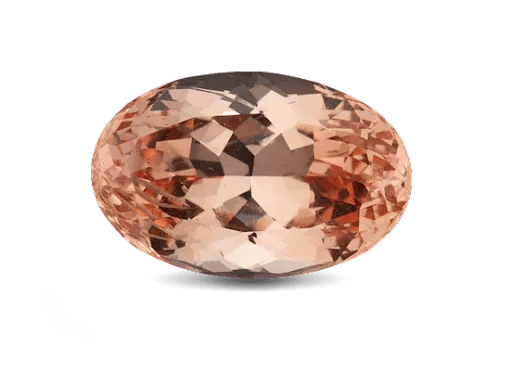
About Morganite
Morganite is a pink to violet variety of beryl, a mineral that includes emerald and aquamarine. Its colour can range from pale pink to peach, yellow-orange, or rose-red, and it is often heat-treated to enhance its colour.
Morganite typically forms in pegmatites, igneous rocks that form when magma cools very slowly deep within the Earth. It can also be found in alluvial deposits, which are gravels left behind by rivers and streams.
Morganite was first discovered in Madagascar in 1911 and was initially called “Pink Beryl.” However, the gemmologist George Frederick Kunz renamed it “Morganite” as a tribute to his patron, New York banker and philanthropist John Pierpont Morgan. Morganite is said to represent love, compassion, and understanding.
Advantages of Morganite
Morganite is typically more affordable than a diamond per carat, making it an inexpensive diamond alternative for couples on a budget. Beyond its elegant colour scheme, one of Morganite's most distinctive features is also its strong birefringence.
When viewed through a microscope, Morganite crystals appear to be doubled. This effect is caused by the fact that Morganite has a lower refractive index than diamond. As a result, light rays are bent differently when they pass through Morganite than when they pass through a diamond.
Disadvantages of Morganite
One of its biggest concerns is hardness. Morganite rates 7.5-8 on the Mohs hardness scale, which means it is more susceptible to scratching and chipping and durable for everyday wear. Morganite is also 60% less brilliant than diamond due to its low refractive index rating.
Conclusion
There are so many diamond alternatives out there that it can be hard to choose just one! Ultimately, it comes down to personal preference, with there being many diamonds and diamond alternatives for your engagement ring or wedding band.

Finally, if you're looking for a real diamond that is cheaper and more ethically sourced instead, consider lab grown diamonds. Created in a lab, they are diamonds that come at a fraction of the price of their mined counterparts. At Cullen Jewellery, we offer only ethical lab grown diamond and moissanite engagement rings — the best of both worlds — so discover our range now!

